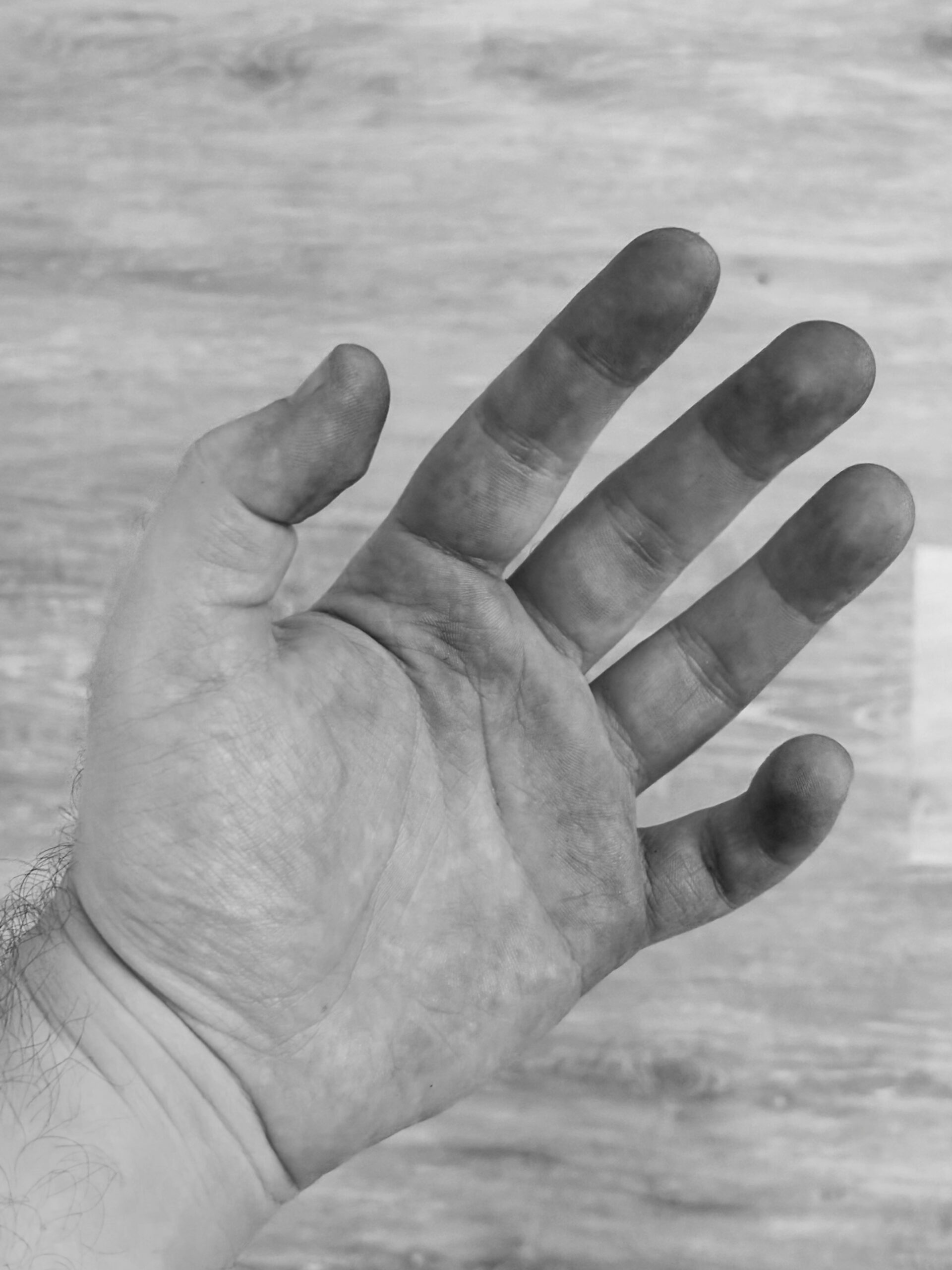I was supposed to clean the Singer 99K i bought last summer in order to see if i could sew notebook covers with it. I ended up restoring this 19231 hand-cranked cutey because i couldn’t stop myself from stripping the original finish. I’m a sucker for scope creep.
I was surprised to find out that the decals weren’t gold, but silver. It makes sense: shellac, a resin made by dissolving bug excretions in alcohol, is a deep amber colour. The original varnish is quite thick and extremely hard. Even though i doused the machine with almost half a litre of denatured alcohol, i could only remove the topmost layers, meaning the decals were still protected and i could wash the parts in the sink with dish soap.
I touched up the nicks and scratches with enamel paint, but even the darkest paint i could find paled in comparison to the pitch-black asphalt used in the original japanning. I rebuilt the finish by painstakingly applying incredibly thin layers of shellac in a process similar to French polishing. The alcohol in the shellac mixture partially melts the previous layer, which you can lift right off if you forget to lubricate your rubbing pad with machine oil.
Little by little, the coats of shellac and oil mix together to form a hard-wearing topcoat. The first layers are rather dull, but just as a bronze haze starts to appear over the decals, the varnish magically buffs up to a mirror finish. I could have continued for weeks, but decided to stop at ten layers. I sprayed a coat of automotive wax to provide another layer of protection.



In between coats, i polished all the chrome parts. First i used sandpaper with progressively finer grit, then rouge on a buffing wheel, and finally automotive polish on a cloth. It was hard work, but it paid off, particularly on the front plate’s beautiful scrollwork. I even managed to remove the chatter marks on the screw heads! A 102-year-old machine will never look brand new, but i don’t think it’s been that clean in decades.
I lightly oiled the screw threads and the oiling points – and i mean lightly. You should never use more than a drop of oil, and even that might be too much. To paraphrase Noël Coward, it should be enough to wave your oilcan in the general direction of the machine. It’s because people drench their machines in oil (or worse, grease) that they end up seizing them up with a gunky mess of slimy dust.
The only thing you want to thoroughly soak is the oil wick that lubricates the bobbin race. It was missing on my machine, like on many others, probably because the previous owner thought it was a stray piece of fabric. It was surprisingly hard (and expensive) to source wool felt as thick as the one Singer used, and i’m still in the process of figuring out the exact size and shape of the wick.
All in all, it was a nice experience with direct applications to typewriter repair, which is my favourite way to spend a rainy weekend2. I still need to clean and repair the lovely bentwood travel case, but i couldn’t resist buying another machine just for the joy of cleaning it. Let’s call it a business expense.
- According to its serial number, it was made in December 1923 at the Clydebank (Scotland) factory, which was the world’s largest sewing machine factory for most of the 20th century. Birth of a Sewing Machine, a fascinating documentary filmed in 1934 in the factory, is available on YouTube. ↩︎
- I would have killed it as a repairman… in the 1950s. ↩︎
